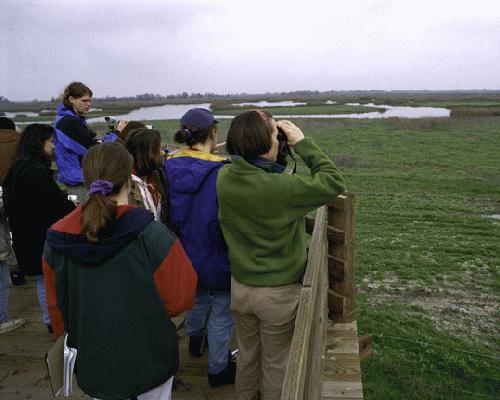Duck Stamp Information for Birders & Photographers
Saving Special Places Near You

Over-draining of wetlands, degradation of prairie grasslands through increased mono-crop agriculture, and cycles of over-harvesting of waterfowl on ever-dwindling habitat.... During the Dust Bowl of the Depression years, these events culminated in a drastic loss of waterfowl. An important step taken to address this crisis was the creation of the Federal Duck Stamp in the mid-1930s, an action that sought to strengthen a National Wildlife Refuge System in desperate need of support.
Following the creation of the Federal Duck Stamp in 1934, the Refuge System grew exponentially over the next decade. In response to the application of scientific and increasingly modern wildlife management techniques, waterfowl populations began to rebound. The Federal Duck Stamp became central to bird conservation during this vital period.
Birders and wildlife photographers have played a key role in helping to generate these important monies for habitat protection. Your continued purchase of Federal Duck Stamps means that we can continue to acquire and protect important areas for birds and other wildlife.
Refuge visitation is now approaching 46 million people per year, and according to recent USFWS figures, more than 80 percent of these visitors engage in wildlife watching, specifically birds. Just as importantly, these visitors are part of the millions of Americans increasingly interested in wild birds and birding.
Buying a Federal Duck Stamp gets you free admission to any national wildlife refuge that charges an entry fee. Each stamp is valid from July 1 through June 30 of the following year.Not Just for Ducks or Hunters
The official name of the Duck Stamp says it all - the Federal Migratory Bird Hunting and Conservation Stamp. Among the birds directly benefiting from Duck Stamp revenues are waterbirds such as the least bittern and black tern; shorebirds such as the black-necked stilt and American avocet; raptors such as the Swainson's hawk and golden eagle; and wetland-associated songbirds such as the vermilion flycatcher and tricolored blackbird.
Many of the country's most popular birding destinations are national wildlife refuges that were established or expanded (102.5KB) using Federal Duck Stamp dollars. Examples of such refuges include Aransas and Santa Ana in Texas; John Heinz in Pennsylvania; Sonny Bono Salton Sea in California; "Ding" Darling in Florida; Parker River in Massachusetts; Bombay Hook in Delaware; Bosque del Apache in New Mexico; Lostwood in North Dakota; and Great Dismal Swamp in North Carolina and Virginia. To find a refuge near you, visit the National Wildlife Refuge System's website.

For additional information on birding opportunities near you, visit our Birding pages or recreation.gov.


